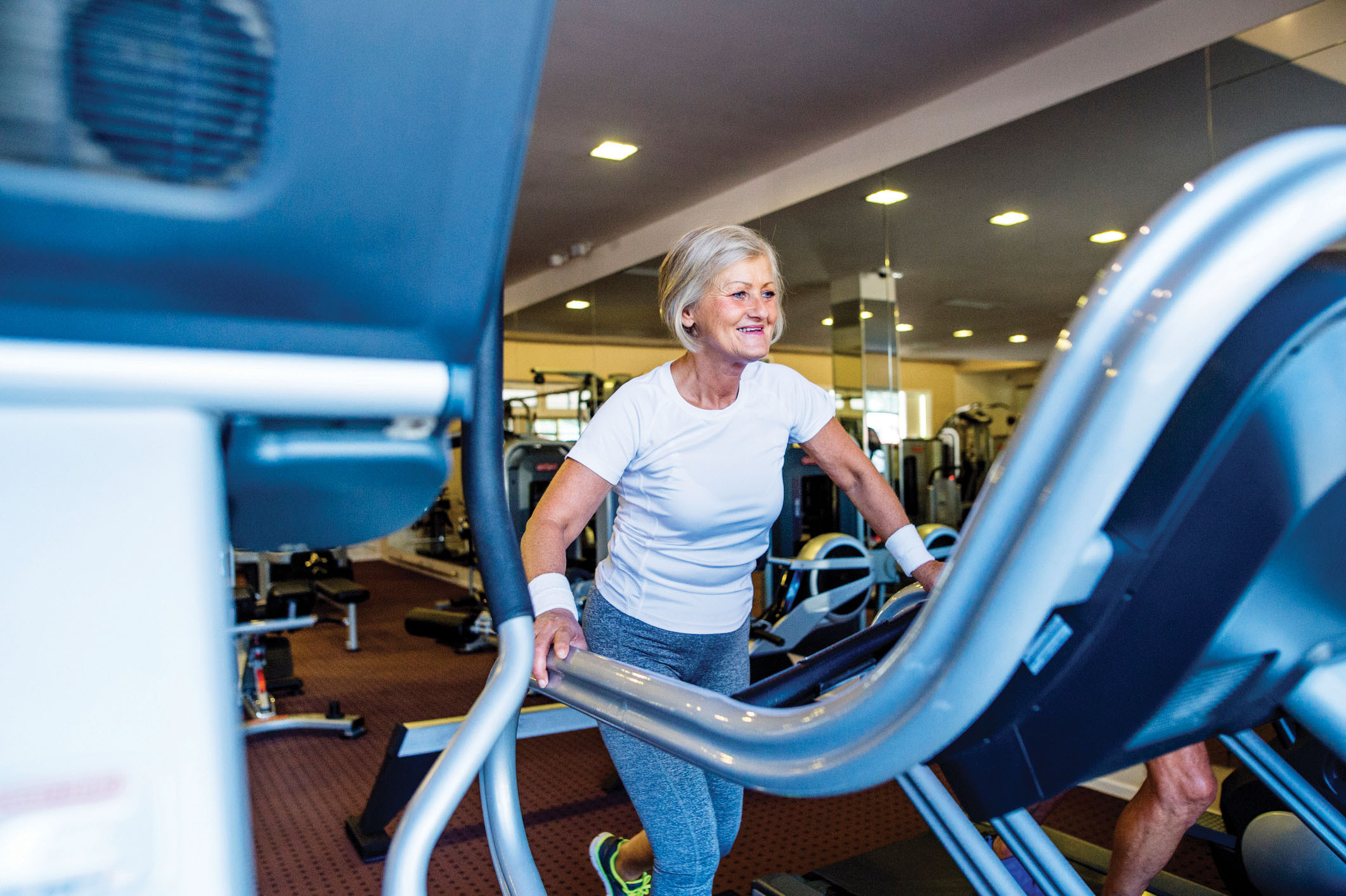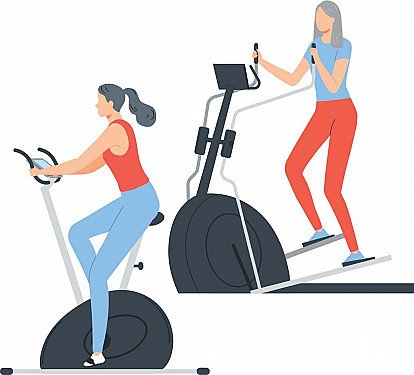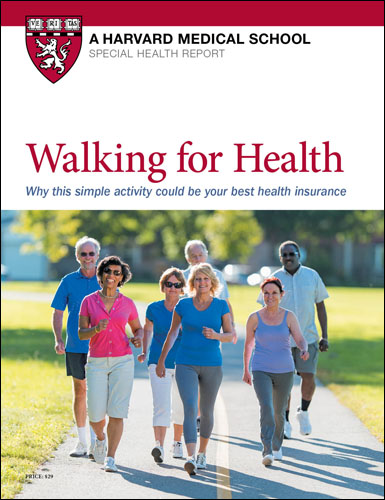When walking is the best medicine
Supervised exercise therapy can be just as effective as more invasive treatments for peripheral artery disease.
- Reviewed by Toni Golen, MD, Editor in Chief, Harvard Women's Health Watch; Editorial Advisory Board Member, Harvard Health Publishing; Contributor

Would you be willing to push past pain if it helped you improve a dangerous health condition? While pain is normally a sign to stop what you're doing, embracing discomfort is exactly what's necessary to successfully treat peripheral artery disease (PAD) through exercise.
An estimated nine million Americans have been diagnosed with PAD, which cuts blood flow to muscles — typically in the legs — when plaque buildup narrows arteries far from the heart. The condition's classic sign is calf pain or cramping while walking (called claudication) that eases with rest.
It may seem counterintuitive that people with PAD are encouraged to walk ever-increasing distances despite pain significant enough to make them want to sit down. But supervised exercise therapy (SET), which centers on treadmill walking, is considered the gold standard for reducing claudication by improving how leg muscles use oxygen. And research suggests SET can help PAD patients walk longer distances more comfortably while proving just as effective as surgical treatments.
"I see a fair number of PAD patients who aren't walking because they feel it will make things worse," says Dr. Brett Carroll, director of vascular medicine at Harvard-affiliated Beth Israel Deaconess Medical Center. "It's often comforting and reassuring to them that walking isn't going to do that."
Stepwise approach
The vast majority of PAD patients show no symptoms, and most are initially treated with cholesterol-lowering statins, blood pressure drugs, and other medications that promote heart health. If symptoms develop, the drug cilostazol — shown to improve walking in PAD patients — may be added. SET comes next in the stepwise treatment approach.
"Many people like that there's a nonsurgical way to treat their problem," says Dr. Ido Weinberg, medical director of the Vascular Imaging Core Laboratory at Harvard-affiliated Massachusetts General Hospital. But when necessary, patients can move on to a surgical intervention, such as placement of a cage-like stent to prop open a narrowed blood vessel or a bypass procedure to reroute blood around a blockage.
Based in hospitals or other health facilities, SET programs have become more widely available across the United States since Medicare's 2017 decision to cover the treatment. "For most patients with claudication, there's no urgency to getting a procedure, and SET can often be as effective as a stent," Dr. Carroll says.
PAD, diabetes, and neuropathyMarked by calf pain that shows up when walking and stops when you do, peripheral artery disease (PAD) can also involve numbness in the leg or foot, sores that heal slowly, and foot pain at rest. These latter symptoms are also common with peripheral neuropathy, a form of nerve damage that's a common complication of diabetes. Indeed, PAD and diabetes are enmeshed. Poor blood sugar control is a well-known risk factor for developing PAD, and about 2% of Americans have both conditions, according to the National Institutes of Health. "You can't always tell the difference between PAD and neuropathy," says Dr. Ido Weinberg, a vascular medicine specialist at Massachusetts General Hospital. "Neuropathy more typically causes a burning or walking-on-clouds sensation in your feet. PAD pain is more in the calves, and doesn't happen at rest," he says. "But sometimes there's overlap." To discern the correct diagnosis, doctors can test a person's blood flow in the legs at rest and during exercise. If there's no change in blood flow while moving, you're more likely to be experiencing neuropathy than PAD, Dr. Weinberg says. |
Tailored treatment
What does SET involve? The 12-week treadmill-based program typically consists of three 30- to 60-minute sessions each week. At the start, you take a test to measure how long and fast you can walk until pain shows up. Your regimen is then tailored to your abilities, blending walking and rest periods based on symptoms. Over time, you'll increase speed, incline, and time spent walking. You'll be monitored by a clinician who will ask you to rate your pain while you're walking and tell you to stop briefly when the pain becomes extreme. You'll alternate walking and rest periods until you've walked for the prescribed number of minutes.
Exercise with other types of equipment, such as arm and leg weights, a stationary bike, or an ergometer (a bike you pedal with your arms), may be included or substituted for treadmill walking, depending on each patient's needs. "These have been shown as well to improve PAD symptoms and offer a nice alternative for patients who may have other limitations with prolonged walking, like orthopedic issues," Dr. Carroll says.
SET programs also educate you on PAD and healthy eating. But SET is not considered the best approach for the fraction of PAD patients dealing with severe symptoms, including leg or foot wounds that won't heal or persistent leg pain even at rest.
Measurable success
Recent research highlights SET's benefits. A study published in December 2021 in the Journal of Vascular Surgery involving 63 patients with calf pain from PAD showed that SET resulted in meaningful improvements in walking speed six months later.
But even an unsupervised home-based walking program can help PAD patients walk farther over the long term — provided they aren't just strolling along.
A 2021 study published in JAMA compared the effects of low-intensity and high-intensity pacing in 305 patients (average age 69; 48% women) who were split into three groups, including a no-exercise set. Both exercise groups walked five times a week for up to 50 minutes while wearing accelerometer devices to track walking duration and intensity. Low-intensity participants walked at a slower pace that didn't cause leg cramping, while the high-intensity walkers hoofed along at a pace that provoked moderate to severe leg cramping. A coach telephoned all patients weekly for 12 months, with non-exercise participants learning more about their condition during the calls.
By the end of the year, high-intensity walking had proved significantly more effective than the low-intensity regimen — or no exercise at all — in improving the distance patients could walk in six minutes.
"Only the patients who pushed themselves improved," Dr. Carroll says, "and the longer you do it, the better it works." Moreover, by increasing a patient's activity levels, "SET is good for overall cardiovascular health," he says.
The power of stretchingFor people with peripheral artery disease (PAD), walking farther and more comfortably are major goals. But they often overlook a simple yet powerful way to help that along: stretching. Two people with PAD may show an identical level of blood vessel blockage, but experience very different levels of the leg cramping and pain that characterize the condition, says Dr. Ido Weinberg, a vascular medicine specialist at Massachusetts General Hospital. "The person experiencing worse walking often has less-efficient muscles," Dr. Weinberg says. Muscles may be less efficient when you don't take the time to stretch. "Tight muscles can contribute greatly to walking impairment, including in PAD. Not everyone likes to do it, but stretching can truly work wonders for one's mobility." |
SET schedule: Pros and cons
While a home-based walking regimen holds obvious appeal over keeping a SET schedule at a health care facility, a formal program ensures you'll be pushed safely beyond your comfort zone while your progress — along with measurements such as blood pressure and heart rate — is tracked, Harvard experts say.
"There are benefits to training on a terrain and in an environment that's natural to you. It also gives you some personal responsibility and motivation," Dr. Carroll says. "Obviously, the limitation is there's no one keeping track of you, nor motivating or pushing you. And some patients need that, at least initially."
Dr. Weinberg agrees, saying "the only way" at-home walking works is when the patient's progress is rigorously tracked using an activity monitor or pedometer. Clinician support and feedback — including educational sessions and phone calls — are also key.
"If you do all that, we see very good results comparable to SET," Dr. Weinberg says. "But if you just tell patients to walk three times a week in a certain way, results can be very disappointing, even in patients who are compliant and eager."
Regardless of venue, any measurable walking improvements take many weeks to become apparent, and benefits last only if PAD patients turn their walking routine into a lifestyle, not just a one-time intervention.
"I recommend pushing through to a modest level of pain for at least three months," Dr. Carroll says. "After that, if you don't keep up your walking program, you will backtrack."
Image: © Westend61/Getty Images
About the Author

Maureen Salamon, Executive Editor, Harvard Women's Health Watch
About the Reviewer

Toni Golen, MD, Editor in Chief, Harvard Women's Health Watch; Editorial Advisory Board Member, Harvard Health Publishing; Contributor
Disclaimer:
As a service to our readers, Harvard Health Publishing provides access to our library of archived content. Please note the date of last review or update on all articles.
No content on this site, regardless of date, should ever be used as a substitute for direct medical advice from your doctor or other qualified clinician.
















